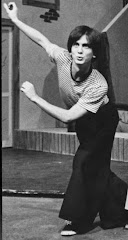Daryl Gates

1926-2010

I am very glad I was not in Los Angeles the past week. I imagine that the local airwaves were full of tributes to Gates, who died April 16. He may have been the most famous, and surely the most controversial, chief of the LAPD. He was a bigot and a bully, and rose steadily through the ranks of the Los Angeles Police Department despite (or perhaps because of) his racist attitudes. (When asked why so many black suspects were dying due to a chokehold his officers were using during arrests, he replied that blacks' arteries were "smaller than normal people.") He believed working with community leaders to prevent crime was an outdated, useless scenario, and during his watch, community policing
 diminished dramatically. He imprisoned hundreds of suspected gang leaders during the 1984 L.A. Olympics so they would not cause a blemish on the city, releasing them after the games were concluded.
diminished dramatically. He imprisoned hundreds of suspected gang leaders during the 1984 L.A. Olympics so they would not cause a blemish on the city, releasing them after the games were concluded. In his early career, he had a hand in the investigations of the Manson family and the Hillside Strangler, which helped his ascendance through the ranks of the LAPD to become its chief in 1978. He demanded, and got, strict loyalty from his men, but clashed repeatedly with the public at large. He had a terrible working relationship with LA mayor Tom Bradley, who was black, but for some bizarre reason, the Mayor of Los Angeles was not authorized to fire the Chief of Police, making Gates answerable to no one (that governmental loophole has since been closed, a direct result of Gates's tenure as chief).


The Rodney King verdict was to be his well deserved downfall. You remember the story, right? King had been detained by police, after leading them on a car chase, and was beaten beyond senseless by four officers, a beating which was preserved on videotape. The incident caused a major sensation, forcing Gates to suspend the officers, who were later put on trial for assault. The atmosphere in LA was so incendiary regarding this incident that a change of venue was granted, and the cops' trial was held in the overwhelmingly white suburb of Simi Valley.
On the evening of April 29, 1992, I was attending a play at the Mark Taper Forum, only a mile or so from what was known as South Central L.A., an area of poverty and crime. The show was Richard II, and TV star Kelsey Grammer was strutting his Shakespeare in the title role. During the intermission, the audience went outside onto the concrete terrace of the theatre, where helicopters were circling overhead, shining bright spotlights onto the streets below. This kind of thing was not uncommon in downtown LA, and I assumed somebody was filming something.
 After the show concluded, and the curtain applause had subsided, a spokeswoman for the theatre scrambled onto the stage to announce that there was a major disturbance happening downtown, and we were all advised to steer clear of the area on our way home.
After the show concluded, and the curtain applause had subsided, a spokeswoman for the theatre scrambled onto the stage to announce that there was a major disturbance happening downtown, and we were all advised to steer clear of the area on our way home.
At the time, I was living in Silverlake, a few miles in the opposite direction, so I didn't think too much about the incident as I drove home. It wasn't until I turned on the news the next morning that I discovered that, the afternoon before, the Simi Valley jury had acquitted the four cops of all major charges, and Los Angeles had erupted into a full-scale riot.
Chief Daryl Gates had been at a fundraiser the night the riots ignited, and subsequent investigation proved that he remained at the party even after being alerted that there was major trouble on the streets. The next day, downtown L.A. was ablaze with fire and rampant looting; Gates's police could not even begin to handle the uprising. I remember sitting on the deck of my apartment, watching the billows of smoke rise up from the downtown skyline, and wondering how such a thing could be happening in a civilized city.

It was several days before any kind of order was restored; Gates's police department and even the national guard could not contain the violence, so the first President Bush ordered the 7th Infantry Division of the US Army onto the streets.
 In the end, 53 people had died and hundreds more were injured, including Reginald Denny. Remember him? He was the white truck driver who was in the wrong place (the intersection of Florence and Normandy in South Central LA) at the wrong time (barely minutes after the King verdict was announced). With news helicopters overhead catching the thing on tape, Denny was dragged from his truck by several black teens, beaten to a pulp, and left for dead.
In the end, 53 people had died and hundreds more were injured, including Reginald Denny. Remember him? He was the white truck driver who was in the wrong place (the intersection of Florence and Normandy in South Central LA) at the wrong time (barely minutes after the King verdict was announced). With news helicopters overhead catching the thing on tape, Denny was dragged from his truck by several black teens, beaten to a pulp, and left for dead.

The city was under heavy curfew for days, and when it was finally over, I walked a block and a half south, to my favorite Korean diner for breakfast. It had been torched by the rioters.
Subsequent investigations laid much of the blame for the riots squarely on Gates and his management of the police department. Two months later, he resigned in disgrace.
In the years since the riots, the tarnish on Gates's reputation was cleaned up, as he became a businessman in the security surveillance area, and was a frequent talk show guest whenever the topic centered on police matters. His autobiography, Chief: My Life in the LAPD was published before the LA riots, and he did not bother to update further editions to include his massive failure to contain the violence. He died last week at the age of 83 from bladder cancer.
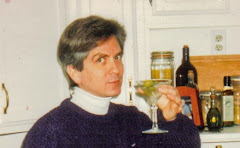
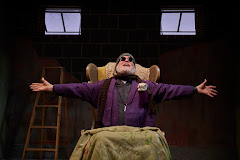




























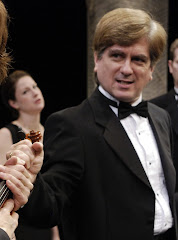
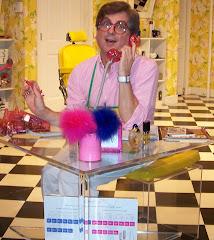
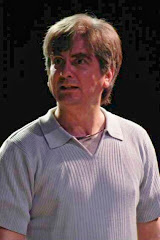
,+Olney+Theatre+Center,+2004.jpg)



,+Shakespeare+Theatre+Company,.jpg)
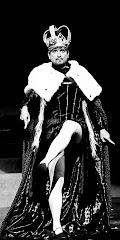

,+Warehouse+Theatre,+1999.jpg)
,+Are.jpg)
,+Everyman+Theatre,2002.jpg)
,+First+Nationa.jpg)
,+Shakespeare+Theatre+Company,.jpg)



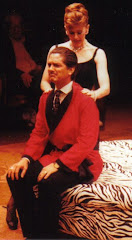

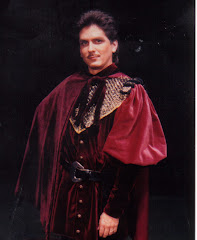
,+Granada+Th.jpg)
,+Globe+Playhouse,.jpg)
,+CSUN,+1976.jpg)
